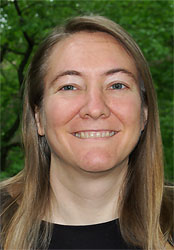 My second novel, Try Not to Breathe, was a story that grabbed hold of me and wouldn’t let go.
My second novel, Try Not to Breathe, was a story that grabbed hold of me and wouldn’t let go.
I’d been working on something else—a book that I’d been writing for quite a while—and I was planning to take a writing break. But Try Not to Breathe had other plans; it refused to wait. It grew out of a verse-writing exercise that I was playing with one day. The main character, Ryan, did not confine himself to a few poems. He just kept on speaking.
 I started with the image of a boy standing under a waterfall, and as I wrote, I learned more and more about him: his suicidal past, his secrets, the crush he had. Then a girl burst onto the scene, with goals and secrets of her own, pushing against the walls Ryan had built around himself. She revealed more about herself with every scene, but I didn’t learn her biggest secret until the second or third draft. Her secret shocked me at first, but it fit. It all made sense, and it brought the story back to where it began—the waterfall.
I started with the image of a boy standing under a waterfall, and as I wrote, I learned more and more about him: his suicidal past, his secrets, the crush he had. Then a girl burst onto the scene, with goals and secrets of her own, pushing against the walls Ryan had built around himself. She revealed more about herself with every scene, but I didn’t learn her biggest secret until the second or third draft. Her secret shocked me at first, but it fit. It all made sense, and it brought the story back to where it began—the waterfall.
Sometimes it happens that way. The first time I write a scene, it may surprise me, and I get to have the same sense of discovery with it that a first-time reader will have.
